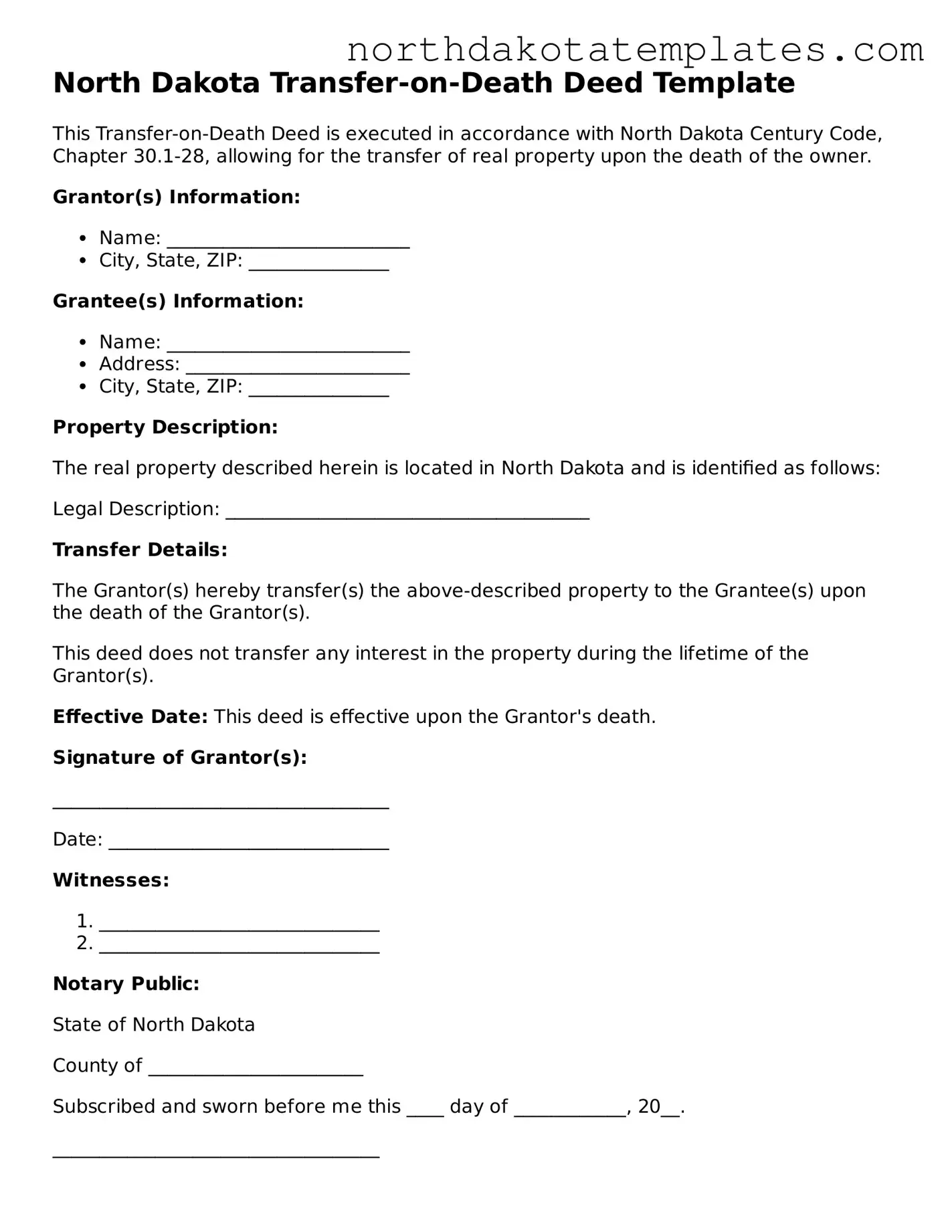What is a Transfer-on-Death Deed in North Dakota?
A Transfer-on-Death Deed (TODD) is a legal document that allows a property owner to designate one or more beneficiaries to receive their real estate upon their death. This deed enables the property to transfer directly to the beneficiaries without going through probate, simplifying the process and potentially saving time and costs for the heirs.
Who can create a Transfer-on-Death Deed?
In North Dakota, any individual who is at least 18 years old and legally competent can create a Transfer-on-Death Deed. The property owner must hold title to the real estate and have the authority to transfer it. It is important to ensure that the deed is properly executed to be valid.
How do I complete a Transfer-on-Death Deed?
To complete a Transfer-on-Death Deed, you will need to fill out a specific form that includes details such as the property owner's name, the legal description of the property, and the names of the beneficiaries. After filling out the form, it must be signed in the presence of a notary public. It is advisable to keep a copy of the signed deed for your records and to provide a copy to the beneficiaries.
Does a Transfer-on-Death Deed need to be recorded?
Yes, in North Dakota, a Transfer-on-Death Deed must be recorded with the county recorder’s office where the property is located. Recording the deed ensures that it is part of the public record and that the beneficiaries' rights to the property are protected. It is recommended to record the deed as soon as possible after execution.
Can I revoke a Transfer-on-Death Deed?
Yes, a Transfer-on-Death Deed can be revoked at any time before the property owner's death. To revoke the deed, the owner must execute a new deed that explicitly states the revocation or file a formal revocation document with the county recorder's office. It is essential to follow the proper legal procedures to ensure that the revocation is valid.
What happens if the beneficiary predeceases the property owner?
If a beneficiary named in a Transfer-on-Death Deed passes away before the property owner, the transfer of property will not occur to that beneficiary. Instead, the property will typically pass to the deceased beneficiary's heirs, unless the deed specifies otherwise. It is advisable to regularly review and update the deed to reflect any changes in circumstances or intentions.
Are there any tax implications associated with a Transfer-on-Death Deed?
Generally, transferring property through a Transfer-on-Death Deed does not trigger immediate tax consequences for the property owner. However, beneficiaries may be subject to capital gains tax when they sell the property. It is wise to consult with a tax professional to understand any potential tax implications and to ensure compliance with tax regulations.
